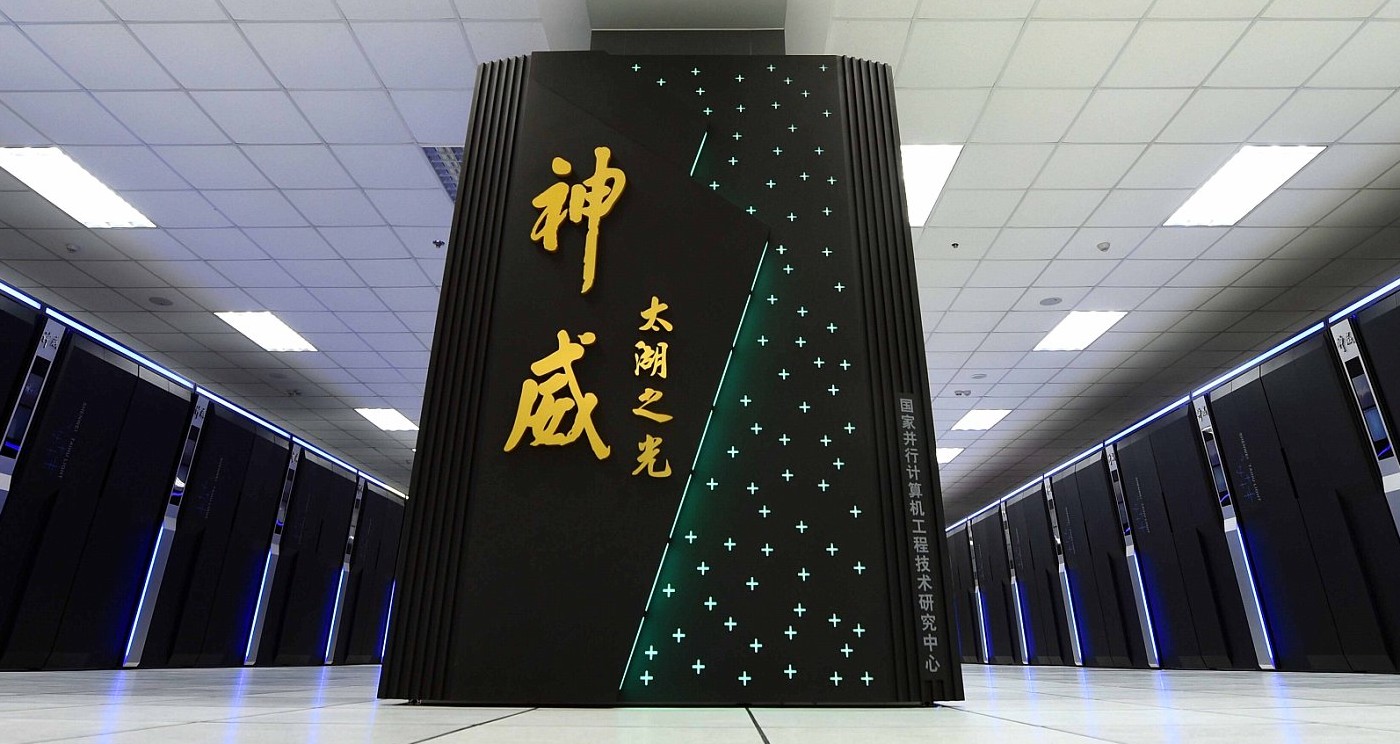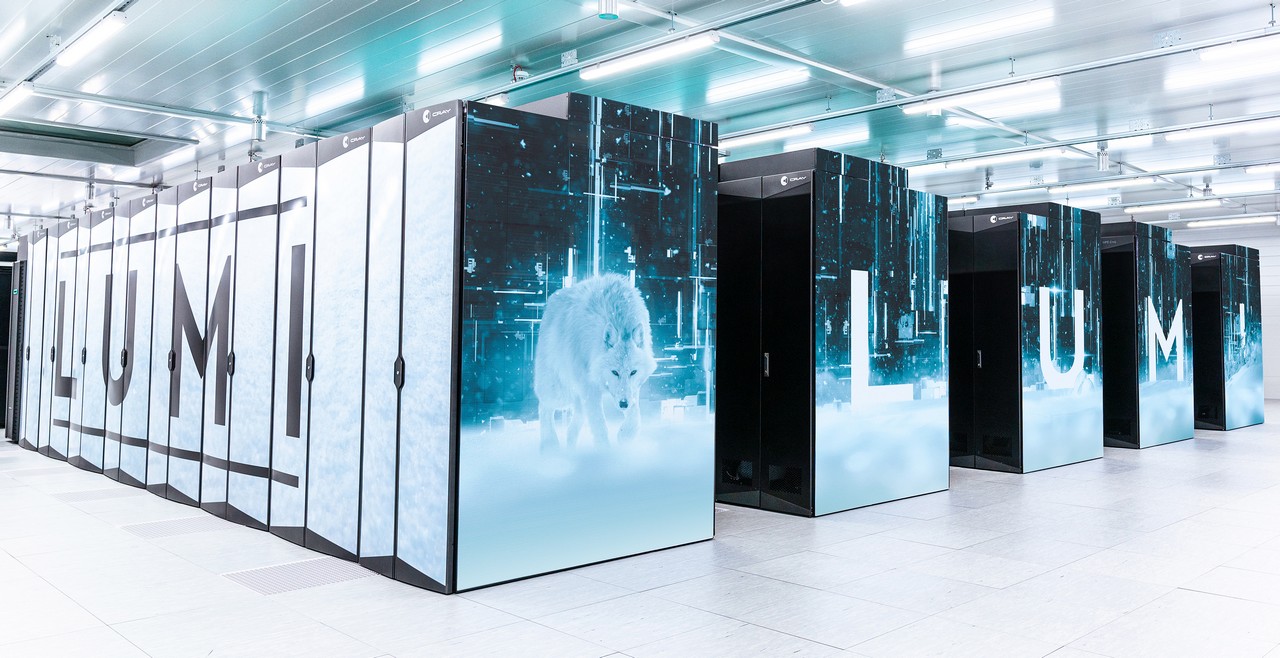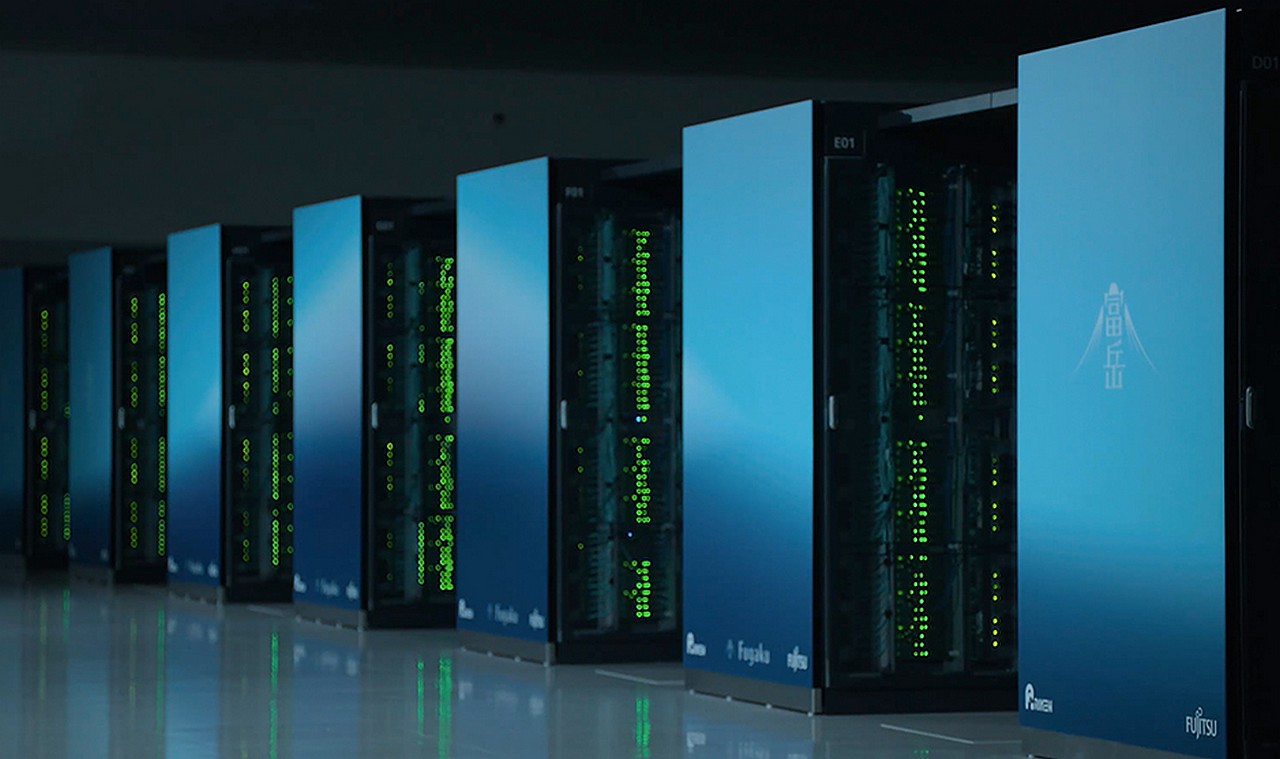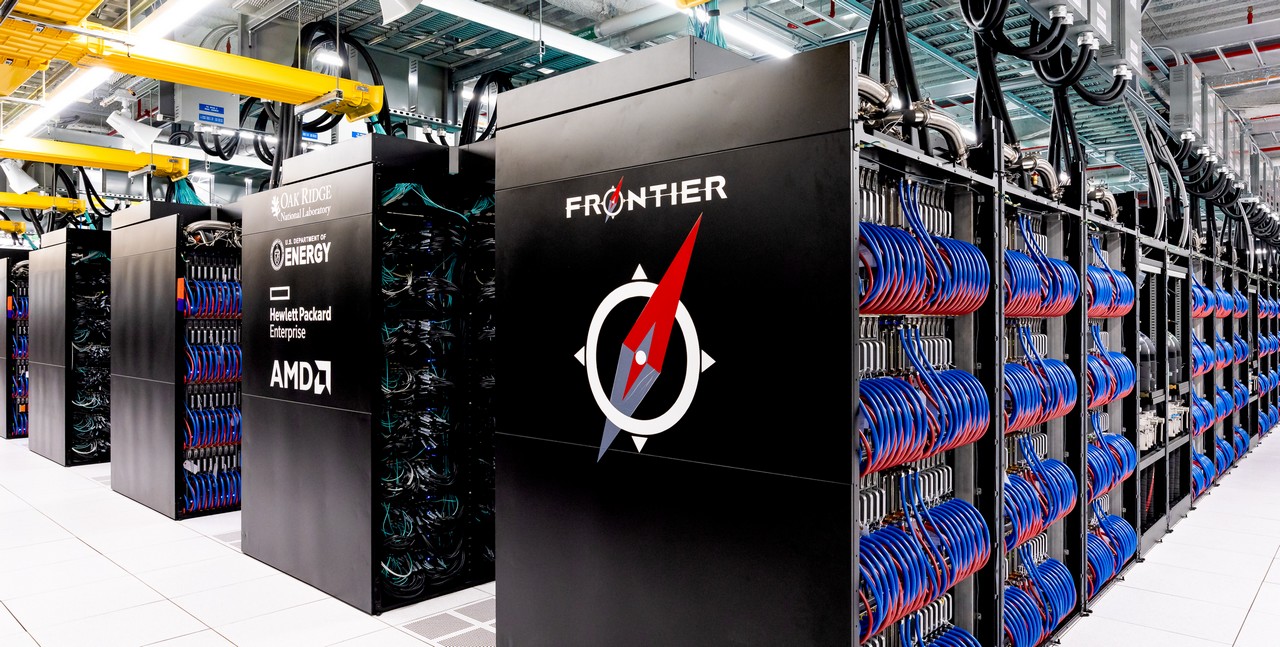What are supercomputers and which are the most powerful?

The TOP500.org world ranking of the most powerful supercomputers is updated twice a year. The performance measures are the mathematical benchmarks Linpack and HPCG. The first operates with dense systems of linear algebraic equations, and the second with sparse matrices. The most supercomputers are located in the USA, China, Germany, Japan and France. Their largest manufacturers are HP/Cray and Dell (both from the USA), Lenovo and Inspur (both China), Eviden (France) and NEC (Japan).
 |
| Sunway TaihuLight (11th place, China). |
The Chinese champion Sunway TaihuLight from the National Supercomputer Center in Wuxi is in 11th place in the TOP500.org ranking. Based on Chinese Sunway processors, each with 260 RISC architecture cores. The total is more than 10 million cores, although they are weaker than the classic x86_64 architecture. It performs well in the Linpack test (93 PetaFlops), but not so well in HPCG (only 25th place).
 |
| Summit (7th place, USA). |
In 7th place is the American supercomputer Summit from the Oak Ridge National Laboratory, which is engaged in research in the field of nuclear energy and nuclear weapons. It combines IBM processors with 22 cores of Power9 architecture (a total of 2.4 million cores) and NVIDIA GV100 video cards of the rather old Volta architecture. However, it produces a respectable 148 PFLOPS, that is, floating point operations per second.
 |
| Leonardo (6th place, Italy). |
The “young Italian” Leonardo(238 PFLOPS), only recently built by Eviden in the Bologna Technocluster, burst into 6th place. It uses 32-core Xeon Platinum 8358 processors and more modern NVIDIA A100 video cards (Ampere architecture). In 5th place is another “European” - the Finnish supercomputer Lumi, named after the mythical wolf. With a high performance of 379 PFLOPS, it is the most energy efficient of the top ten (consuming only 7.1 megawatts).
 |
| Lumi (5th place, Finland). |
In 4th place was the Japanese Fugaku(442 PFLOPS in Linpack), built by Fujitsu at the Riken Computer Center, where physical and chemical experiments are carried out. This is the only supercomputer from the top ten that does not use video cards, but only processors, and ARM architecture. A total of 7.6 million cores is obtained, which makes it a record holder in the second HPCG benchmark. True, Fugaku’s electricity consumption is record high - 29 megawatts.
 |
| Fugaku (4th place, Japan). |
Third place went to Eagle(561 PFLOPS), the only private supercomputer in the top ten. It is owned by Microsoft and is responsible for Azure cloud services. Theoretically, anyone can rent part of the computing power of this supercomputer. But the queue has already been planned for years in advance. A distinctive feature of Eagle is the latest NVIDIA Hopper H100 video cards, which, thanks to tensor cores, are tailored specifically for artificial intelligence tasks. The famous GhatGPT application runs on the power of Eagle.
 |
| Eagle (3rd place, USA). |
Second place went to the 585 PFLOPS Aurora supercomputer (shown in the title photo of the article) from Argonne National Laboratory, which studies renewable energy sources in the United States. This is the only supercomputer in the TOP 10 that uses Intel Data Center GPU server video cards. They are complemented by over 90 thousand Xeon Max 9470 processors, each with 52 Sapphire Rapids cores and, accordingly, 104 virtual Hyper-Threading threads. Aurora was built by Intel itself.
 |
| Frontier (1st place, USA). |
Finally, the honorable first place, at least until the next update of the TOP500.org ranking, belongs to Frontier. This is the second Big Ten supercomputer located at Oak Ridge National Laboratory. It is about eight times faster than its “little brother” Summit (7th place) - 1196 PFLOPS. At the moment, Frontier is the only supercomputer on the planet with a performance of more than 1 ExaFLOPS. This was achieved thanks to AMD Epyc 64C processors and AMD Instinct MI250X video cards, and HP/Cray put it all together.
Server power supply

| Tviy-Dim.com | 6 027 ₴ | To Store |
| Q-techno.com.ua | 5 959 ₴ | To Store |
| Comtrading.ua | 5 570 ₴ | To Store |
| Itbox.ua | 5 497 ₴ | To Store |
| Kvshop.com.ua | 5 851 ₴ | To Store |
Seasonic SS-500L1U is a server power supply in EPS 1U format, which in thickness occupies only one rack in the mounting cabinet. On the main +12 V line it produces 480 W of power. It has a completely modular cable design, although the set of connectors differs from the desktop ATX standard. Reactive power correction method - Active PFC 99%.
While the efficiency can reach 92% with a European input voltage of 230 V, which corresponds to the 80 PLUS Gold energy efficiency certificate. Operation is also supported in American 110-volt electrical networks. Stabilization of output low-voltage lines - progressive separate DC-DC. Implemented protection against overload, short circuit and power surges.
It is cooled by a fan with a small diameter of 40 millimeters, but with a high rotation speed (silence from the servers is not required). Double ball bearings minimize lubricant leakage, which ensures trouble-free operation of up to 100 thousand hours. Semi-passive cooling at low load on the power supply completely stops the fan.
Server case

| Q-techno.com.ua | 9 927 ₴ | To Store |
| Comtrading.ua | 9 396 ₴ | To Store |
| Itbox.ua | 9 679 ₴ | To Store |
| Brain.com.ua | 9 679 ₴ | To Store |
| Kvshop.com.ua | 10 299 ₴ | To Store |
Chieftec UNC-410S-B-U3 is a computer case for installation in a four-unit 4U server rack. Made of 1.2 mm thick steel, so it weighs a respectable 13 kilograms. Supports ATX and MicroATX motherboards, as well as video cards up to 33 centimeters in length. The processor cooler fits up to 14 cm in height.
By default, the case is equipped with two 90 mm fans. There are seats for three more propellers: one 80 mm and two 60 mm. The power supply can be installed either one classic ATX, or two specialized server ones at once, which perform the Redundant backup function. Also on sale you can find a version of the case with a pre-installed 400 W power supply.
The front door of the housing is locked with a key to prevent unauthorized access. Behind it are two USB 3.0 ports (as indicated by the U3 index in the model name), external slots for three 5.25-inch drives and one 3.5-inch. Four more hard drives can be placed inside the case. An easily removable, washable dust filter is provided.
Server UPS

nJoy Balder 3000 is a heavy-duty uninterruptible power supply and also a voltage stabilizer. Which can be installed either horizontally in a 2U server rack or vertically (Tower form factor) on the supplied legs. Its maximum and rated output power are the same - 3000 volt-amperes and 3000 watts, respectively.
At 25% load it provides 26 minutes of battery life, at 50% - 11 minutes, at 75% - 6 minutes, and finally at 100% - 3 minutes. Taking into account the six built-in batteries, it weighs a respectable 27.5 kilograms. Charges from zero to 95% in just three hours. Supports the connection of an additional external battery, which further increases autonomy.
Produces pure sine wave AC current with an efficiency of 97%. It has as many as nine output outlets, including one high-ampere, and is cooled by two fans. Implemented cold start and auto-restart after the power supply is restored. The built-in LCD screen displays useful service information. Synchronizes with a computer via USB, COM or Ethernet port.
Articles, reviews, useful tips
All materials















